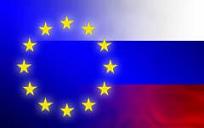
March 14th, 2013
Summarised and described by Prof. Zdobyslaw Goraj, Member of EASN Board of Directors
In one of EU documents (russia_comm.pdf) one can find a characteristic of Russian approach to research, innovation and cooperation with various institutions of European Union: "a new Russian strategy document for innovation policy entitled Innovative Russia 2020 was launched to strengthen the innovative capacities of the country and to boost the process of economic diversification. One of the main purposes of this strategy is to develop an effective system of innovation to modernise the economy and to support its competitiveness by means of advanced technologies. The idea is to make science one of the main resources for economic growth. The strategy document presents measures such as the stronger integration of international cooperation on innovation, implementation of technology platforms, developing roadmaps for key technology sectors, strengthening innovation activities in the business-enterprise sector, and increasing the share of competitive research and development funding. Key initiatives include the launch of six 'mega projects' in research infrastructures, the setting up of a programme of incentives to attract international researchers and Russian scientists working abroad, and the development of innovation centres such as the Skolkovo Institute. Already the leading international partner in FP7 (gauged both by number of participants and by budget) Russia should further develop its cooperation with Europe in key areas of mutual interest, including aeronautics research, ICT, nanotechnologies and Research Infrastructures. For example, the EU's 2013 research work programme includes a coordinated call on high-speed air transport, which involved Russia as well as Australia and Japan (budget ?5 million). The planned adoption of a strategic EU-Russia partnership in research and innovation, should provide the basis for reinforced cooperation with the EU in the framework of Horizon 2020." This approach is not new. For example, in the last VI call of FP7 (deadline for proposals submission elapsed on Nov.14, 2012) together with the main Call we had 2 L1 size Coordinated Calls: EU-Russia cooperation and High Speed Aircraft where Russian partners could play the key role. However, in the horizon 2020 we can expect an essential increase of EU-Russia cooperation. The preliminary assumptions and fundaments were presented at ILA in Berlin, Sept.13 during the meeting chaired by Daniel Chiron. During this meeting Professor Sergey Chernyshev - Executive TsAGI Director - proposed several topics for join research. Among these topics there are:
1. Flight-test Investigation of Active Swept-wing Boundary Layer Laminarization and Turbulent Friction Drag Reduction;
2. Active usage of Structures Elastic Features to Control the Loads, Vibrations and Aircraft Adjustment to the Flight Modes;
3. Aerial Refuelling of Commercial Aircraft;
4. General Aviation Safety and Efficiency Improvement by means of Control "Light" and Inexpensive Automation;
5. Flight Safety and Efficiency Improvement by Means of Control System Automation and Optimal "Pilot-aircraft" Interaction;
6. Development of Collaborative Decision making Technologies to Improve Flight Safety and Efficiency;
7. Development of Seamless Airport technologies with use of 4D Contracts Principles;
8. Integration of UAV in Single Airspace;
9. Applying TVC for Improving Transport Aircraft Safety and Making it Greener;
10. Investigation of new Generation Aircraft's Concepts;
11. Improvement of the Methods of the Airship's Appearance, Airframe, Balancers and Control System Aerodynamic Design;
12. Investigating the Possibility of Sonic Boom and Noise Reduction for Perspective Transport Supersonic Aircraft while Taking off and Landing;
13. Investigation of Advanced Flying Vehicles Power Plant Integration including Technologies for Creation and Investigation of their Components;
14. Development and Investigation of Active Methods for Management of Unsteady Processes in Order to Lower Emissions and Noise and Extend Engine Stability Margins;
15. Provision of Safety and Reliability of Flying Vehicle Engines and Lowering of Operational Costs;
16. Creation of Automatic Traffic Management Beyond SESAR;
17. Development and Investigation of methods for Creation and Manufacturing Vehicle Navigation Systems with the Aid of the Earth Physical Fields;
18. Development and Investigation of Methods for Creation and Manufacturing Zero Maintenance Equipment for Aviation;
19. Development of Technologies of Creation of Board Equipment for Fully Electrified Aircraft (FEA);
20. Creation of Self-contained Automated Design Technologies and System Integration of Complex of On-board Equipment with the Support of the Processes of Testing and Trials on the Basis of the Model-Oriented Approach;
In the attached file one can find more details with respect to tasks description, background and expected results. At the moment it is not clear if all these 20 topics will be officially lunched in the calls for proposals. Many depend on the interest from the side of European entities, including industry, research establishments and academia. European Commission declared a support and flexibility. It was emphasized that if there are some partners interested in specific topics then the right way would be to make a contact to Russian partner (via TsAGI) and notify the European Commission about the willingness to work on the preparation. In the result of multilateral consulting and negotiation there is chance for some of these topics on the list proposed by Prof. S.Chernyshev. For sure, there is a place for actions to be done by ASD, EASN and EREA.
Related files: Chiron_RF_proposals_FP8_110053.pdf